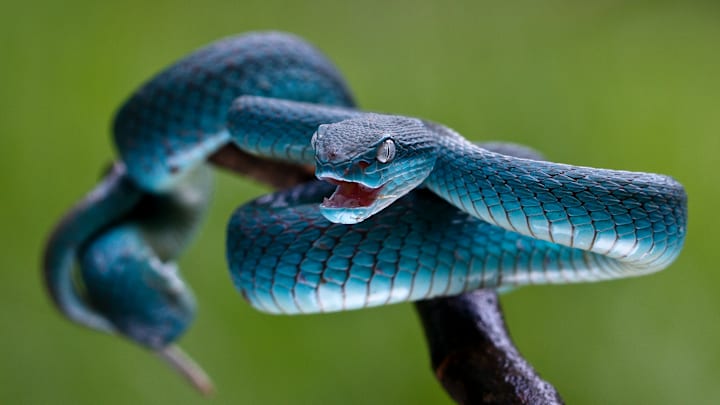Should you find yourself in a snake-infested area and unlucky enough to get bitten, what’s the best course of action? You may have been taught the old cowboy trick of applying a tourniquet and using a blade to cut the bite wound to suck out the poison. It certainly looks dramatic, but does it really work? According to the World Health Organization, approximately 5.4 million people are bitten by snakes each year worldwide, about 81,000 to 138,000 of which are fatal. That’s a lot of deaths that could have been prevented if the remedy were really that simple.
The “cut and suck” method was discredited a few decades ago, when research proved it to be counterproductive. Venom spreads through the victim’s system so quickly, there’s no hope of sucking out a sufficient volume to make any difference. Cutting and sucking the wound only serves to increase the risk of infection and can cause further tissue damage. A tourniquet is also dangerous, as it cuts off the blood flow and leaves the venom concentrated in one area of the body. In worst-case scenarios, it could cost someone a limb.
Today, it’s recommended not to touch the wound and seek immediate medical assistance, while trying to remain calm (easier said than done). The Mayo Clinic suggests removing any tight clothing in the event of swelling, avoiding any caffeine or alcohol, which can increase your heart rate, and not taking any drugs or pain relievers. It’s also smart to remember what the snake looks like so you can describe it once you receive the proper medical attention.
How to Identify a Venomous Snake
Venomous species tend to have cat-like elliptical pupils, while non-venomous snakes have round pupils. Another clue is the shape of the bite wound. Venomous snakes generally leave two deep puncture wounds, whereas non-venomous varieties tend to leave a horseshoe-shaped ring of shallow puncture marks. To be on the safe side, do a little research before you go out into the wilderness to see if there are any snake species you should be particularly cautious of in the area.
It’s also worth noting that up to 25 percent of bites from venomous snakes are actually “dry” bites, meaning they contain no venom at all. This is because snakes can control how much venom they release with each bite, so if you look too big to eat, they may decide not to waste their weapon on you and save it for their next meal instead.
A version of this story originally ran in 2018; it has been updated for 2023.
